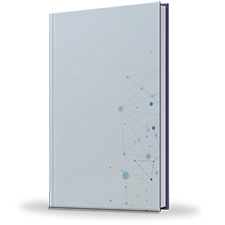On-board magnetic sensor is regulated after it is mounted on a circuit board and is used for determining disturbances or fluctuations in magnetic field such as strength, direction, and flux. It works on the principle of transducer that measures magnetic field and converts it into an electrical signal. These magnetic sensors find wide applications in consumer electronics as well as in control system of automobile equipment as it is highly reliable, durable, robust, low power consumption, and cost-effective solution. It features low hysteresis, robustness to dirt, and other contaminants. In addition, these sensors offer wide operating range and high linearity for improved measurement accuracy as compared to Hall effect sensors, which enhances product quality standards in industrial control applications. Lucrative growth opportunities in sensing and detection due to innovation in internet of things (IoT) associated with this component implies that the on-board magnetic sensor market would undergo significant steady on-board magnetic sensors market share in the coming years.
Covid Impact Analysis:
The COVID-19 pandemic is becoming more serious due to continuous global spread and unavailability of appropriate therapeutic and diagnostic systems. Since the outbreak epicenter was China, which accounts for the premium part of manufacturing unit of sensing technologies, ongoing disruption has caused apparent changes in the overall demand and supply chain of the on-board magnetic sensors market.
In March 2020, a technology was developed at Bar-llan University based on the combination of optics and magnetic particles that can rapidly take saliva test samples of potential COVID-infected patients in just 15 minutes. It consists of two electromagnets that create a strong magnetic field and collect thousands of fluorescent molecules from an entire solution. Then the molecules are aggregated into laser beam, thereby multiplying signal strength by several times.
Top Impacting Factors: Market Scenario Analysis, Trends, Drivers, and Impact Analysis
Surge in development of on-board magnetic sensors through partnership, collaboration, mergers and acquisition of various organizations as well as surge in demand for these sensors for navigational purposes are major factor that fuel the market growth. However, conditions related to changeable, inconsistent magnetic field tends to hamper the on-board magnetic sensors market growth.
On the other hand, BIAS magnetic field sensors such as reed switches, GMR sensors, and Hall devices are used to tune sensitivity and measure range of magnetic sensors created by poles of magnetic films, which is being used for displacement sensing and rotational preference. Rise in demand for these sensors in consumer electronic devices such as laptops, smartphones, cameras, and in electric and hybrid vehicles present ample new pathways to the on-board magnetic sensors industry.
New Product Launches to Flourish the Market
Leading on-board magnetic sensors market players adopt necessary steps to enhance accuracy, overall performance, and wide operating range of on-board magnetic sensors
In September 2019, Asahi Kasei Microdevices Corp., manufacturer of advanced sensing devices based on compound semiconductor technology, launched AK09940, a general-purpose, digital output, tri-axis magnetic sensor IC. It provides ultra-low noise of 40nT RMS and ultra-low power consumption of 4nA @100Hz. The magnetic sensor is based on tri-axis electronic compass sensing solution, which can increase magnetic 6-DOF position tracking accuracy for wearable devices. AK09940 is used in AR-VR controller devices, magnetic particle testers, and for metal contamination detection that can be detected even if the sensor is hidden behind objects.
Surge in Use in Automotive and Industrial Applications
On-board magnetic sensors allow contactless, wear-free measurement of mechanical quantities in automobiles such as angle of rotation and angular speed. They offer precise angular position measurement up to a wide range of 3600. In addition, these sensors are also used in industrial applications such as current measurement in AC-DC converters, overcurrent fault detection, and battery monitoring.
In May 2020, Murata Manufacturing Co. Ltd. launched the MRMS (Multi Radar Multi Sensor) AMR (Anisotropic Magnet Resistance) sensor that can detect a horizontal magnetic field allowing a single magnet to support various sensing positions. These AMR sensors utilize magnetic resistance change rate, which is affected by external magnetic field strength. It has wider detection area compared to Hall IC along with supply voltage of 1.6 to 3.5V or 3.5 to 5.5V. These design elements offer smaller package size as well as high flexibility and sensitivity.
Key benefits of the stakeholders:
- The study gives an analytical overview of the on-board magnetic sensors market forecast with current trends and future estimations to determine imminent investment pockets.
- The report provides information related to key drivers, restraints, and opportunities along with detailed on-board magnetic sensors market analysis.
- The current on-board magnetic sensors market trends are quantitatively analyzed.
- Porter’s five forces analysis illustrates the potency of buyers & suppliers in the market.
Questions answered in the on-board magnetic sensors market research report:
- Who are the leading market players active in the on-board magnetic sensors market?
- What would be the detailed impact of COVID-19 on the market?
- What current trends would influence the market in the next few years?
- What are the driving factors, restraints, and opportunities in the on-board magnetic sensors market?
- What are the projections for the future that would help in taking further strategic steps?
On-board Magnetic Sensors Market Report Highlights
| Aspects | Details |
| By Type |
|
| By Magnetic Density |
|
| By Application |
|
| By Industry Vertical |
|
| By Region |
|
| Key Market Players | Sanken Electric, TDK Corp., Asahi Kasei Microdevices Corp., Murata Manufacturing Co Ltd., Sensitec GmbH, NXP Semiconductors., Kohshin Electric, Melexis NV, Infineon Technologies AG, Honeywell International Inc. |
Loading Table Of Content...



